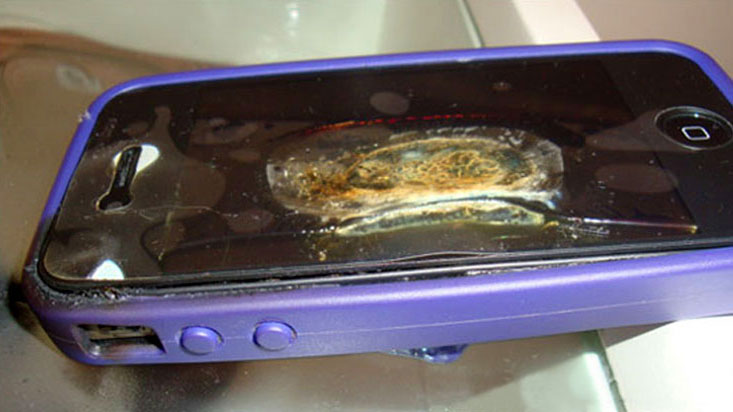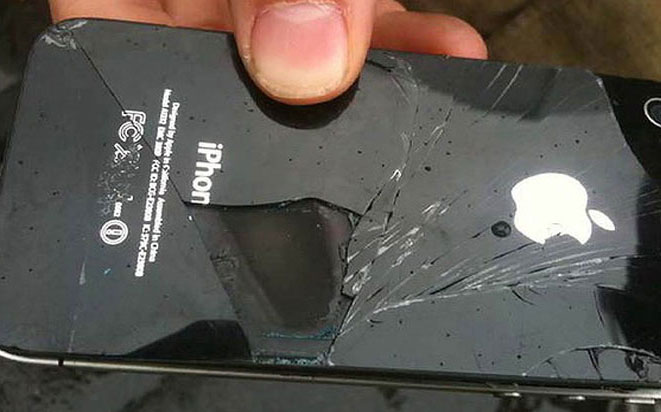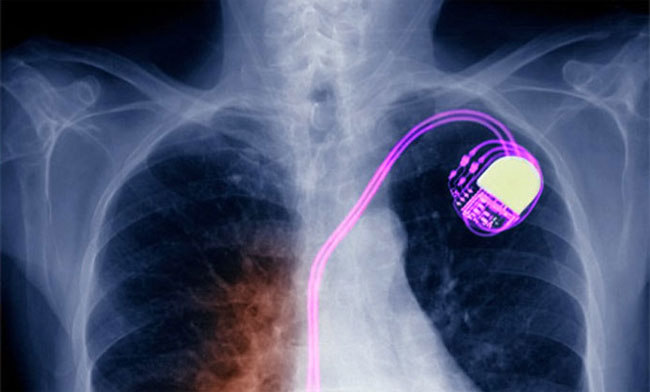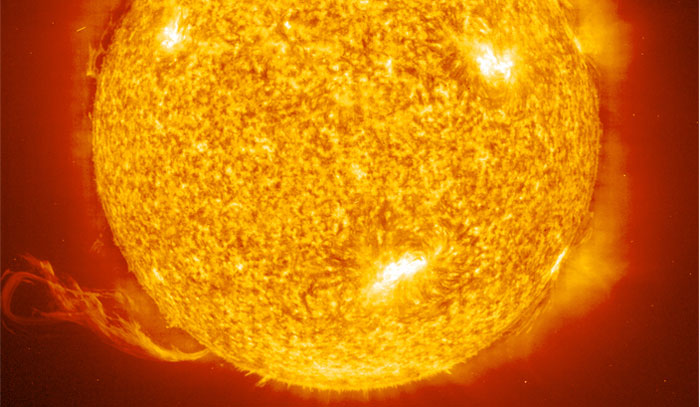




Solar Flares Cause Electronic Glitches by Infrasound Standing Waves
Electronic Cigarette Blows Up in Man's Face, Knocks Out 'All His Teeth'
by John O'Mahony for The Irish Examiner
March 1, 2012
A strange accident has left a Niceville man with severe injuries and burns.
He was smoking an electronic cigarette when it blew up in his face.
Laura Hussey "When firefighters here at the North Bay station got the call there'd been an explosion in someone's home, they thought it might be an oxygen tank. It turns out something much smaller had done some awful damage."
Tom Holloway is a photographer, a Vietnam Veteran, a father of three.

A Second iPhone4 Catches Fire, This Time in Brazil
by Sam Laird for Mashable
November 30, 2011
Looks like Australia isn't the only country to have seen an incident of a combustible iPhone 4 over the past week. A similar incident has been reported in Brazil as well, where a device plugged in for overnight charging allegedly began emitting smoke and sparks less than a foot from its sleeping owner's face.
According to Brazilian media reports, the iPhone's owner emerged unscathed but flustered. The device was made in France, where in 2009 a teenager claimed to have been hit in the eye with a glass splinter when his girlfriend's iPhone began hissing - and its glass screen exploded.
Also worth noting is that in Brazil the 8GB iPhone4, newly introduced there, is believed to have the world's heftiest price tag for the model, with devices reportedly going for more than $900, data plan not included.
The Australian Transport Safety Bureau is investigating the iPhone 4 that began emitting smoke and glowing red aboard a domestic flight there last weekend, as what exactly caused that combustion remains speculative.
Apple has so far not responded to Mashable comment requests on the Brazilian or Australian reports.

Red Hot, Smoking iPhone Self-Combusts on Airliner
by Ben Grubb for The Age
November 29, 2011
An Apple iPhone 4 was glowing red hot and emitted a "significant amount" of dense smoke as it spontaneously combusted on board a flight in Australia in the second reported incident of its kind in the past month.
It's not the first time electronic devices have exploded or caught fire. Numerous incidents have occurred over the past decade including Dell laptops catching fire, a journalist's LG phone catching fire and Sony Australia recalling 4300 laptops (440,000 globally) from its Vaio TZ series due to fears they could overheat, damaging the machines and potentially burning users. In 2009 iPhone users in France also reported similar incidents.
The incident involving a passenger's iPhone 4 glowing red hot occurred on board Regional Express flight ZL319 operating from Lismore to Sydney last Friday after landing, the airline reported.
The second incident, which Fairfax Media was made aware of by an anonymous reader, allegedly happened on November 3 when their iPhone 3GS (an earlier model) did something similar. The reader provided pictures as evidence.
In an emailed statement at 12.35pm today, Apple Australia spokeswoman Fiona Martin said the company was looking "forward to working with officials" investigating the first incident. No comment was offered on the second incident.
In a statement regarding the first incident, Regional Express said a flight attendant carried out "recovery actions" immediately and that the red glow was extinguished successfully, adding that the matter has been reported to the Australian Transport Safety Bureau (ATSB) as well as the Civil Aviation Safety Authority (CASA) for investigation and directions. All passengers and crew on board were unharmed, the airline said.
CASA spokesman Peter Gibson told Fairfax today that the ATSB was going to strip the iPhone 4 down "and try and understand what happened". The intention was "to do that some time this week", he said, adding that the iPhone 4 was no longer operational. Anecdotally he had never heard of a similar incident occurring during or after a flight...

US: Chicago Man Tries to Remove Own Pacemaker, Dies
Associated Press
November 1, 2011
A Chicago man has died after authorities say he cut his chest to try to remove his pacemaker.
The Cook County medical examiner says 47-year-old Channing Askew died Monday night at a Chicago hospital. The Chicago Tribune reports that a doctor told police that Askew apparently had tried to remove his pacemaker himself. Police say paramedics were called to a group home where Askew lived when he complained of chest pain.
Police say Askew complained to paramedics about chest pains. Askew fell unconscious in the ambulance. Paramedics trying to revive him removed Askew's shirt and found a puncture wound on the upper left side of his chest.
An autopsy is planned. The group home did not have additional information.

Mystery Glitch? Blame It On the Sun
by David Shiga for New Scientist
June 23, 2010
Ever think to check the space weather forecast? Power suppliers and the operators of oil pipelines and railroads might want to start. Although it would take a truly massive space storm to cause a catastrophe, it is becoming clear that even modest solar activity poses a threat in our technology-dependent world. It makes railway signals go haywire and rusts oil pipelines to the point that they may leak, not to mention wearing down key components in power grids, which could drive up the cost of electricity.
If our planet happens to be in the line of fire when the sun belches out clouds of plasma, these coronal mass ejections (CMEs), can greatly disturb Earth's magnetic field. Such magnetic disturbances in turn can generate currents in power transmission lines, which act like giant antennas to pick up the disturbances.
A huge solar burst - similar in strength to one observed in 1859, the biggest on record - could wreck the world economy. Big storms that occur about once per decade can also create chaos, like one that caused a 9-hour blackout in Quebec, Canada, in 1989. But the effects of smaller space storms have not been examined in as much detail as they deserve, says Louis Lanzerotti of the New Jersey Institute of Technology, who is editor of the journal Space Weather.
Relatively minor space storms now appear to be behind a range of mysterious mishaps - railway signals malfunctioning in Archangel province in north-western Russia, for example, between 2000 and 2005. A study led by Eugenia Eroshenko of the Pushkov Institute of Terrestrial Magnetism, Ionosphere and Radio Wave Propagation in Troitsk, Russia, examined episodes when signals turned red for minutes or even hours though the track ahead was clear, then spontaneously reverted to green.
Eroshenko's team found that 16 malfunctions of this sort observed between 2000 and 2005 coincided with space storms (Advances in Space Research, DOI: 10.1016/j.asr.2010.05.017). "We were surprised by such a clear correlation," Eroshenko says.
How could space weather switch railroad signals from green to red? CMEs appear to interfere with circuits used to sense whether a segment of track is occupied. A power source connected to the two rails normally maintains a voltage between them while they are unoccupied. When a train is present, it eliminates the potential energy difference between the rails by allowing electricity to flow from one to the other. Space storms may have the same effect on the rails as a train, generating unwanted electric currents that could cause the voltage between the two rails to drop and the signal to turn red.
The parts of the Russian railway studied by Eroshenko's team might be especially vulnerable to space weather because they are in the far north, and solar storms are most intense around the poles.
Team member Risto Pirjola of the Finnish Meteorological Institute in Helsinki thinks that if other countries start examining the timing of unexplained signal problems, they may turn up a similar link to space weather. The evidence of a link to space storms is "very convincing", says Rod Perala of Electro Magnetic Applications, a consultancy in Lakewood, Colorado, that studies the effects of space weather. It would be wise for railways in other countries to check their equipment for vulnerability to space weather, too, he says.
It should be possible to modify railways to prevent these problems. Some sections seem immune to space weather, perhaps because of minor differences in electrical hardware, and the parts used in the problem-prone areas could be changed, Eroshenko says, but funds have been lacking. Space weather may also make oil and gas pipelines more prone to rusting - a particular concern because rusty pipelines sometimes spring leaks, creating costly and environmentally damaging spills. The chemical reactions that cause rust require electrons to flow from the pipe into the surrounding soil, so one way to keep corrosion at bay is to create a potential energy barrier that impedes this flow of electrons, using a power source attached to the pipe. Space storms, however, generate currents in pipes that can overwhelm this barrier, allowing corrosion to proceed.
Engineers have measured such currents, though no one has yet quantified how much these flows increase corrosion. "That's much harder to estimate because it's a long, slow process and it depends on a host of other factors" like soil composition and moisture, says David Boteler of the Geological Survey of Canada's Geomagnetic Laboratory in Ottawa.
The worry is that corrosion induced by space weather may reduce the useful lifetime of the pipes, which in turn means they require early replacement. This could be a very costly problem, if for example it cuts the lifetime of a pipeline from an expected 60 years to 30, given the great expense of building new ones, Boteler says. And the effects on pipelines may be worldwide.
Richard Marshall of the Australian Bureau of Meteorology's space weather unit found that space storms disrupted voltages in pipelines in northern Australia, which is just 20 degrees from the equator.
"Geomagnetic effects are becoming an issue that must be considered for pipelines at all latitudes," says Boteler.
Subtle effects of run-of-the-mill space storms may also wear down key components in electric power grids, making them liable to early failure.
Space storms cause currents to flow in electrical transformers, which are used to boost the voltage of electrical flows to the high levels needed for efficient long-distance transmission and then back down again for safe use by consumers at the delivery point. Intense power surges due to big space storms can heat transformers enough within minutes to damage the insulation needed to prevent short circuits, which can cause them to explode.
More recently, there are signs that transformers can be destroyed by smaller currents over a period of hours or more. A long-lasting 2003 space storm delivered only relatively low-intensity currents to the South African power grid, but damaged several transformers anyway, notes US-based storm analysis consultant John Kappenman.
Kappenman raised concerns about low-intensity storms at a conference in March in Dallas, Texas, organised by the North American Electric Reliability Corporation. Small insults from numerous storms may accumulate over a period of years, causing transformers to fail, he says. The number of transformer failures in the US seems to mirror the 11-year rise and fall of the solar cycle, which governs the frequency of space storms, in data Kappenman presented at the conference.
The cost of replacing transformers gets passed on to consumers, though Kappenman says it is unlikely to account for more than a few per cent of the total cost of electricity. Still, the problem is pervasive. "Arguably every transformer that's out there has been exposed to some degree to this problem."
Lanzerotti emphasises the importance of such cumulative effects. "The big [storms] are so dramatic that people pay most attention to them," he says, "but I do think these cumulative types of effects deserve more attention."
Analysis
The serious cases of fatalities attributable to electronic glitches is mounting worldwide, with the latest examples of the spontaneous combustion and even explosion of electronic cigarettes and iPhones, while a similar case has already been identified in Vallejo, California. This same anomalous energetic influence has also recently been reported on board airliners which experience rapid overheating and melting of windshield heating elements, which cause the airplane windshields to shatter. Sydney, Australia has a growing history or related piezoelectric superheating events.
In a previous case, a pacemaker malfunctioned to cause an elderly man to attempt to remove it from his chest. This tragic event occurred in Chicago - an infrasound resonance hotspot that has been responsible for other unusual events affected by invisible acoustic influences that have become ambiently focused by the Orion pyramids of Giza, Egypt.
Chicago, Illinois (41.79°N 87.59°W) is 6,142 miles from Giza, Egypt, a distance that comprises 24.7% of the Earth's mean circumference (of 24,892 miles). This type of strange acoustic influence has been noted in Chicago as far back as 1900, when loud banging sounds proceeded to cause household objects to jerk around in a partial levitation state.
Charles Forte summarizes news reports from the Hyde Park area of Chicago, that on January 7, 1900, "chairs and tables, at times, hopped about... Time and time again there was the sound like the discharge of a revolver." [Fort C (1941) 'The Complete Books of Charles Fort: The Book of the Damned, Lo!, Wild Talents, New Lands', Henry Holt & Co., p. 943]
The corrosion of pipes and the disruption of railroad sigmals are the least that humanity has to fear from the increasingly intense solar activity. Other more prevalent and more dangerous forms of electonic gliches are now manifesting as deadly spontaneous acceleration problems in electronically-controlled cars, and spontaneous piezoelectric fires.
Spates of spontaneous infrasound-induced fires were set ablaze in Tenerife, Freetown, Babura, Abuja, Bauchi, Jos, Omukondo, Onakaheke, Tsholotsho, Lalapansi, Goodhope, Nairobi, Mpumalanga, Mapuve, Bodibe, Bloemfontein, Hopewell, Cape Town, Landovica, Galway, Longford, Glasgow, Dublin, Crewe, Kenton, Waterford, Peterborough, Coventry, Hull, London, Surrey, Steeple, Egham, Wisbech, Messina, Peschici, Berici, across northern Greece, Ratria, Kakori, Mumbai, Kolkata, Charajpura, Thiruvananthapuram, Kishtwar, Gangyal, Rangrik, Kota Baru, Kuala Lumpur, Santo Tomas, New Norcia Darwin, Rockhampton, Adelaide, Brisbane, Eaglehawk, Sydney, Georgetown, La Pampa, Melipilla, Nelson, and in the US in Seattle, Corvallis, Soudan SP, Minneapolis, New Ulm, Pueblo, Waxahachie, Anderson, Bluffton, Georgetown, Homosassa, San Mateo, Vallejo, San Francisco, Clovis, Calaveras, Haverhill, Peabody, Brentwood and New York City.
This website is entirely dedicated to elucidate the exact mechanisms by which the transference of electromagnetic energy from the solar corona converges into specific focal points on the surface of the Earth. The focal points of infrasound standing waves are identified in each and every case presented at this site, according to the quadratic fractal formula [ zn+1 = zn2 ].
This ancient formula is encoded in the Sanskrit-based kundalini pyramid traditions of world as the sacred mandala of a square within a circle. These same advanced ancient traditions provide us with the profound Prophecy of the Red Dawn which foretells of the great changes entailed in the coming shift of the ages, culminating in the magnetic reversal of Decemeber 22, 2012.